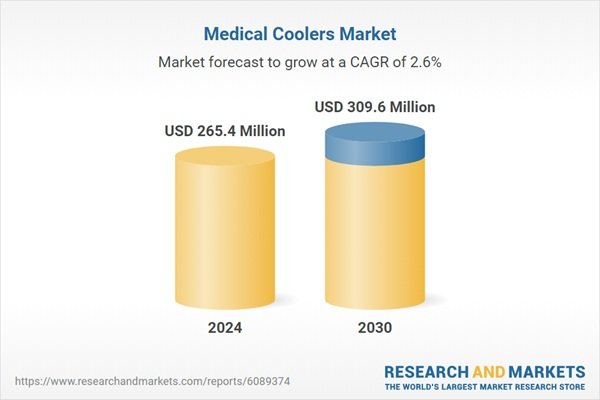Medical Coolers Market to Reach US$309.6 Million by 2030, Driven by Biologics Demand
The global market for medical coolers is projected to grow from US$265.4 million in 2024 to US$309.6 million by 2030, with a compound annual growth rate (CAGR) of 2.6%, according to the “Medical Coolers - Global Strategic Business Report” released by ResearchAndMarkets.com.
The growth is primarily driven by increasing demand for temperature-sensitive biologics, expanding immunization programs, and rising requirements for cold chain compliance. Use cases include vaccine distribution, blood and plasma transport, and organ delivery. Medical coolers offer thermal stability under varying environmental conditions, with designs tailored for point-of-care and field operations.
New technologies are enhancing product functionality. Advanced models feature phase change materials (PCMs), vacuum insulation panels (VIPs), GPS tracking, and digital logging systems. IoT integration enables real-time condition monitoring and remote temperature management via cloud platforms. Battery-assisted and solar-powered units address needs in off-grid locations.
The market report segments products by type—liquid-based and air-based cooling—with the liquid segment expected to reach US$179.0 million by 2030, growing at a 1.9% CAGR. The air-based segment is projected to expand at 3.6% CAGR over the same period. Applications include medical imaging systems, lasers, and laboratory equipment, with end users ranging from OEMs and hospitals to diagnostic centers.
Regionally, the U.S. market was valued at US$72.3 million in 2024. China is forecasted to grow at a 4.9% CAGR to reach US$59.2 million by 2030. The report also covers growth in Japan, Canada, Germany, and the broader Asia-Pacific.
Key players profiled include B Medical Systems, Dometic Group, ELITE BAGS, Haier Biomedical, and Follett Products LLC, among others. The report also provides tariff impact analysis based on recent global trade developments.
